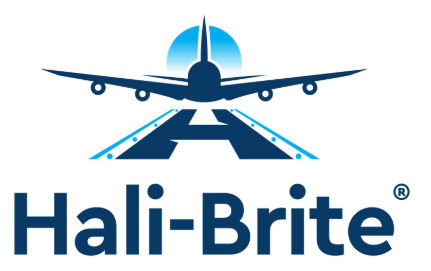Airport rotating beacons indicate the location of an airport by projecting beams of light spaced 180 degrees apart. Rotating beacons are required for any airport with runway edge lights. They create a “flash” similar to lighthouses, however, with Airports the flashes vary in color to identify different airport types: White/green flashes identify a civil airport. White/yellow flashes for a seaplane base. White, green, and yellow flashes identify a heliport. White, white, and green flashes identify a military airport.
Aviation Circular 150/5345-12F provides specifications for light beacons that are used to locate and identify civil airports, military airports, seaplane bases, and heliports. It went into effect on September 24th, 2010, replacing AC 150/5345-12E. The major updates to AC 150/5345-12F are:
1. Chapter 2 is updated to include Engineering Brief #67 and updated MIL-C-7989B.
2. Paragraph 3.4.3 is updated to include a reference to Engineering Brief #67.
3. Paragraph 4.2.2.4 is updated to include reference to Engineering Brief #67. There are several types of airport beacons and two different classes:
Beacon Type:
L-801A Medium intensity airport beacon
L-801H Medium intensity heliport beacon
L-801S Medium intensity seaplane base beacon
L-802A High-intensity airport beacon
L-802M High-intensity military airport beacon.
L-802H High-intensity heliport beacon
L-802S High-intensity seaplane base beacon
Beacon Class:
Class 1: For operation over the range -22 to 131 degrees Fahrenheit (F) (-30 to 55 degrees Celsius (C).
Class 2: For operation over the range -67 to 131 degrees F (-55 to +55 degrees C).
Environmental Requirements
Airport beacons must withstand wind velocities up to 100 miles per hour, driving rain and snow, ice coating up to 0.5 inches, exterior plastic parts must not degrade when exposed to sunlight (solar radiation), and operate in temperatures ranging from -22 degrees to 131 degrees F for Class 1 beacons, and -67 degrees to 131 degrees F for Class 2 beacons.
Flash Requirements
The following table shows the flash rate, flash duration, and color format for the different types of rotating airport beacons:
| Rotating Beacon | Flash Rate | Flash Duration | Color Format |
| L-801A | 22 to 26 flashes per minute | 75 to 300 milliseconds (ms) | Alternating white and green |
| L-801S | 22 to 26 flashes per minute | 75 to 300 milliseconds (ms) | Alternating white and yellow |
| L-802A | 22 to 26 flashes per minute | 75 to 300 milliseconds (ms) | Alternating white and green |
| L-802S | 22 to 26 flashes per minute | 75 to 300 milliseconds (ms) | Alternating white and yellow |
| L-801H | 33 to 39 flashes per minute | 75 to 300 milliseconds (ms) | Alternating white, green, and yellow |
| L-802H | 33 to 39 flashes per minute | 75 to 300 milliseconds (ms) | Alternating white, green, and yellow |
| L-802M | 16 to 20 flashes per minute | 75 to 300 milliseconds (ms) | Alternating white, white, and green |
Lamps
The airport beacon must use lamps with a minimum rated life of at least 4,000 hours at rated voltage. The light beam center must be field adjustable through vertical angles from 2 to 10 degrees above the horizontal plane using common hand tools. A scale marked in one-degree increments must be provided to indicate the vertical beam center setting.
Rotating Beacon Mounts
As per AC 150/5340-30J, Design and Installation Details for Airport Visual Aids, Rotating beacons must be mounted higher than any surrounding obstructions so that the bottom edge of the beacon’s light beam will clear all obstructions.
Beacons may be mounted on the roof of hangars or other buildings; on top of control towers when authorized by the local FAA regional office, or on wooden power pole towers and metal towers. Beacons can also be located on tip-down poles.
Sources:
AC 150/5345-12F, Specification for Airport and Heliport Beacons, 24 September 2010
AC 150/5340-30J, Design and Installation Details for Airport Visual Aids
